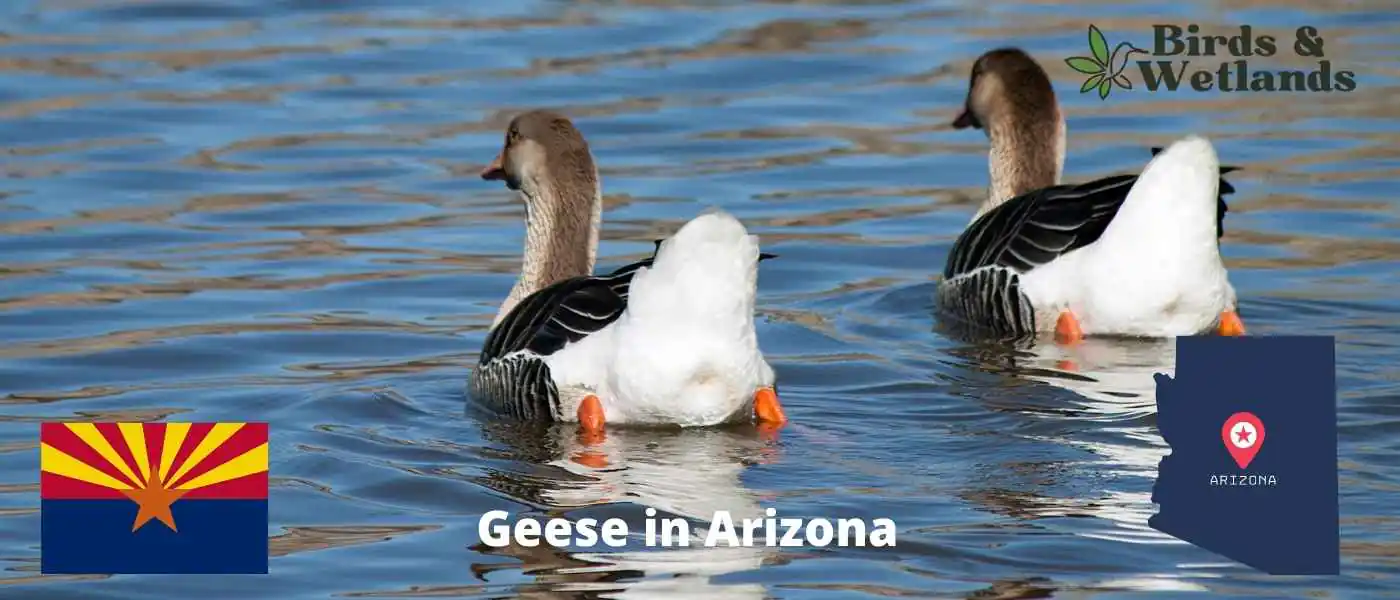When it comes to geese, Arizona is home to a remarkable variety of these majestic birds. From the soaring skies to the serene lakeshores, geese gracefully traverse the diverse landscapes of the Grand Canyon State.
With their distinctive calls and impressive flight formations, geese captivate both seasoned birdwatchers and curious nature enthusiasts.
In this guide, we’ll embark on an exploration of geese in Arizona, uncovering their habits, habitats, and the wonders they bring to this remarkable southwestern state. Get ready to delve into the world of Arizona’s geese and be amazed by the beauty and diversity they bring to the arid landscapes.
Arizona Geese
There are five main types of geese found in Arizona which are:
| Goose | Frequency in Arizona | Resident Population | Specific Locations in Arizona |
|---|---|---|---|
| Cackling Goose | Uncommon | No | Gilbert Water Ranch, Agua Caliente Park |
| Snow Goose | Uncommon during migration | No | Whitewater Draw Wildlife Area, Lower Salt River |
| Ross’s Goose | Uncommon | No | Gilbert Water Ranch, Hassayampa River Preserve |
| Greater White-fronted Goose | Uncommon | No | Patagonia Lake State Park, Willcox Playa |
| Canada Goose | Common | Yes | Tempe Town Lake, Reid Park Pond, Watson Lake |
Along with a whole host of other Arizona waterfowl including blue winged teal, mallard duck, cinnamon teal, tundra swans (the tundra swan is the most common swan in Arizona), trumpeter swans, ring necked ducks and ruddy ducks
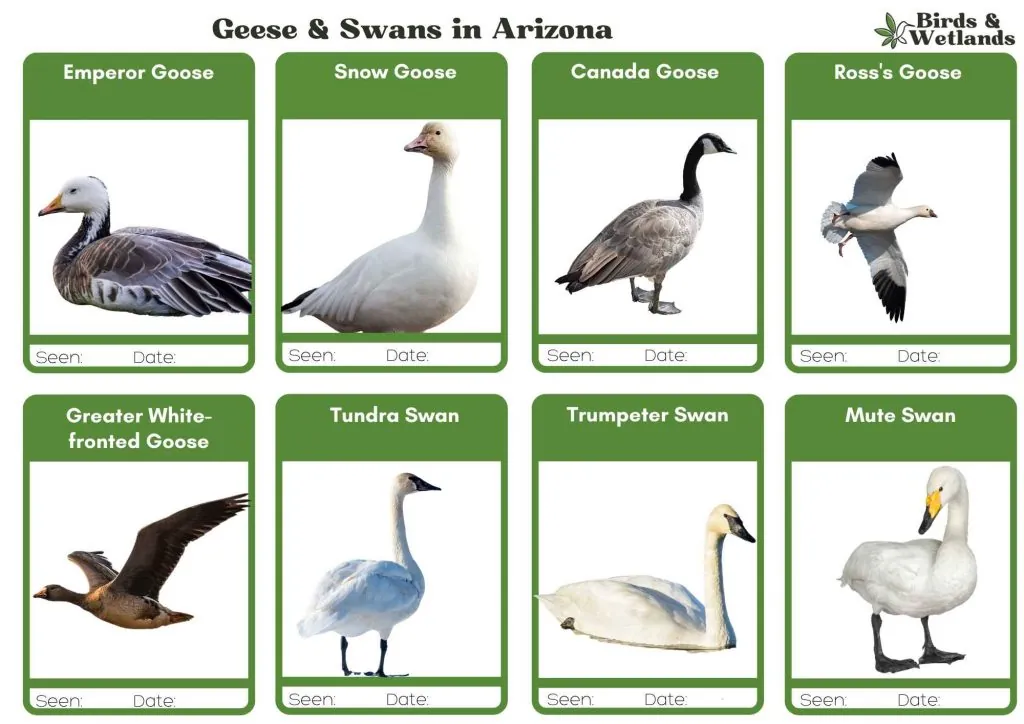
Geese Species Found in Arizona
Cackling Goose
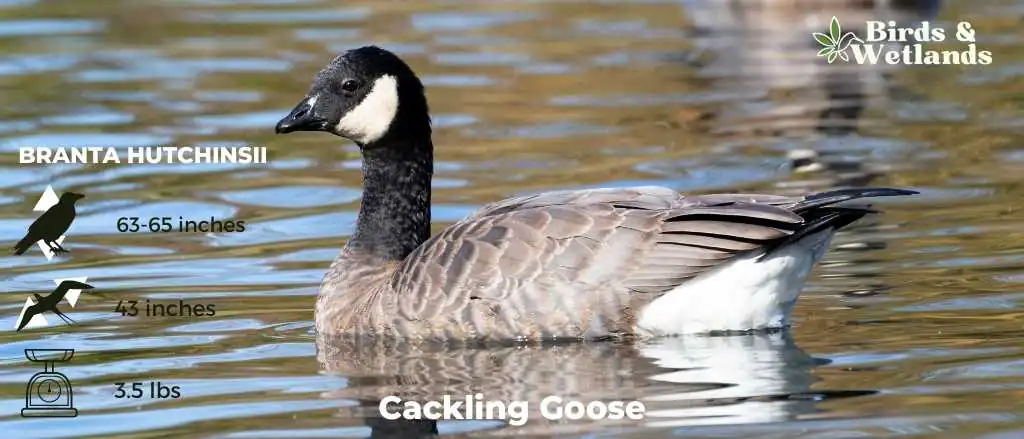
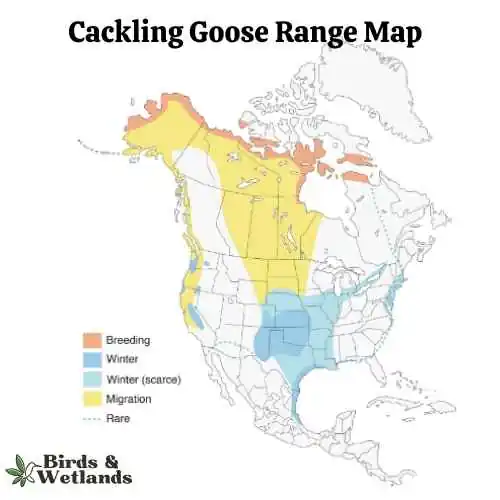
Listen
Scientific Name: Branta hutchinsii
Length: 24.8–25.6 in
Wingspan: 43-45.7 in
Weight:3.5 lbs
Cackling Geese are particularly known for their high-pitched, cackling calls, which is the source of their name. Despite their small size, these geese are renowned long-distance migrants, with some populations traveling thousands of miles between breeding and wintering grounds.
Appearance: With a similar color pattern to the larger Canada Goose, the Cackling Goose features a black head and neck, white chinstrap, light tan to cream chest, and brownish-grey body. One defining characteristic is its noticeably smaller size and stubbier neck compared to its larger counterparts.
Diet: Like many geese, the Cackling Goose’s diet mainly consists of plant matter. This includes grasses, seeds, and aquatic vegetation. They are often seen grazing on land or dabbling in shallow water.
Reproduction: Cackling Geese usually nest on the ground in elevated areas near water bodies, such as riverbanks or lakeshores. The female lays a clutch of 2 to 8 eggs and is responsible for incubation, while the male stands guard nearby. Incubation lasts for about a month.
Snow Goose
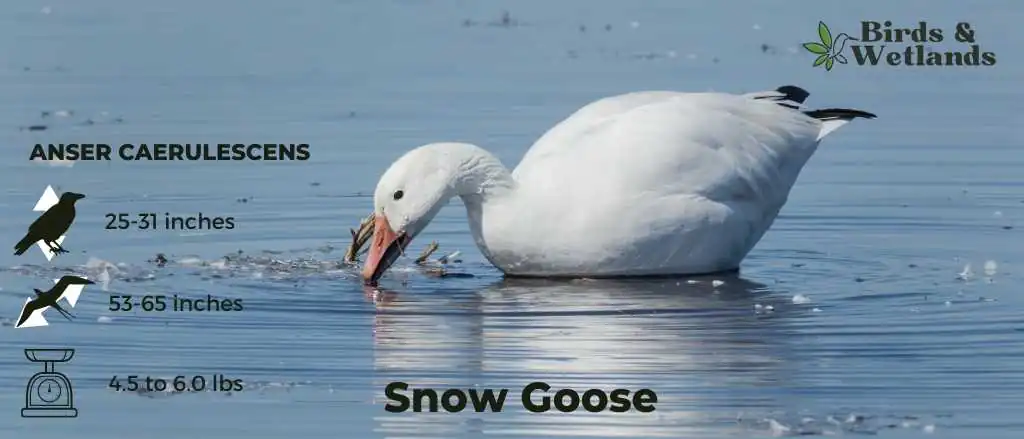
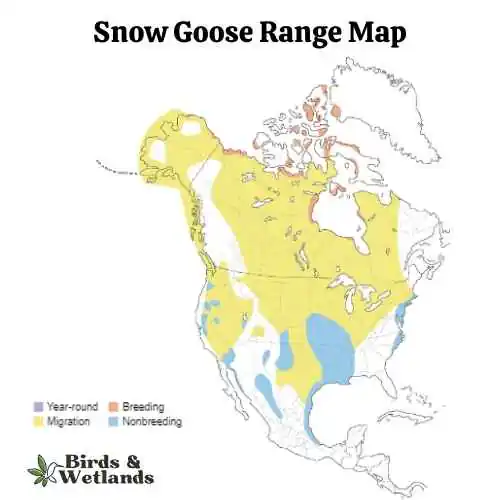
Snow Goose Sound
Scientific Name: Anser caerulescens
Length: 25 to 31 in
Wingspan: 53 to 65 in
Weight: 4.5 to 6.0
The Snow Goose is a large species of waterfowl known for its vibrant white plumage and significant migratory flights.
Appearance: True to their name, Snow Geese are predominantly white with black wingtips. They also have a pink bill, pink legs and feet. A color morph, known as the “Blue Goose,” displays a bluish-gray body with a white head, but is considered the same species.
Diet: Snow Geese primarily feed on plant matter, such as grasses, sedges, and small grains. They can often be seen in large flocks foraging in fields and marshes, and during migration and winter, they can cause considerable damage to agricultural fields due to their feeding habits.
Reproduction: Snow Geese typically nest on the tundra, near water bodies. The female builds the nest and lays a clutch of about 3 to 5 eggs, which she incubates alone for approximately three weeks. Once hatched, the goslings can feed themselves but stay with their parents for protection until they can fly.
Ross’s Goose
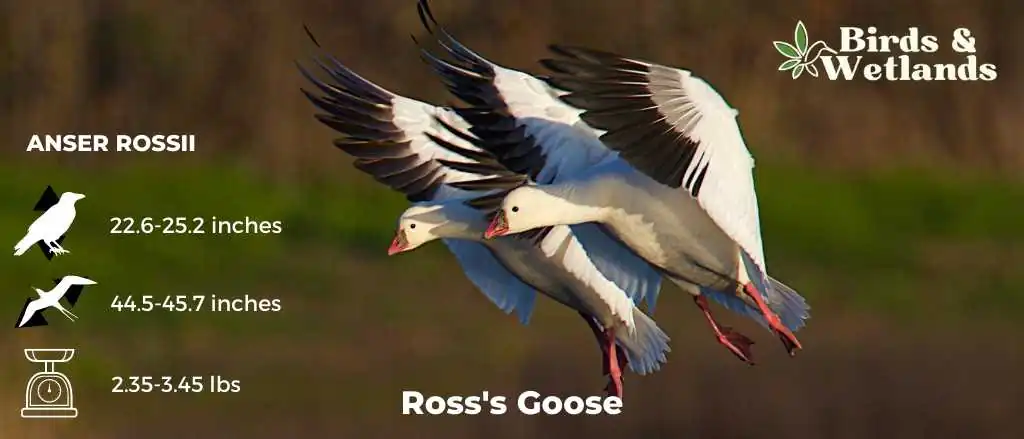
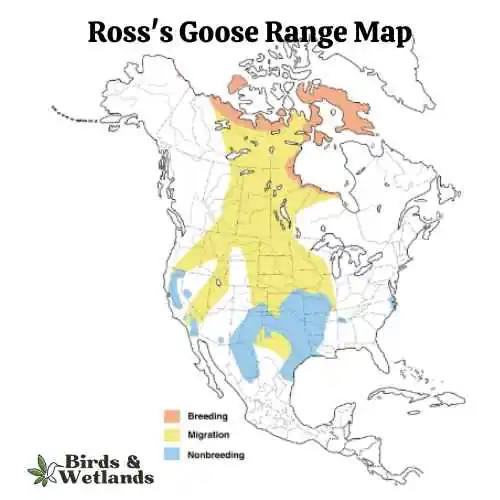
Listen
Scientific Name: Anser rossii
Length: 23.2-25.2
Wingspan: 44.5-45.7 in
Weight:42.3-55.3 oz
The Ross’s Goose is a small species of waterfowl often found in North America’s tundra and wetland habitats.
Appearance: Known for its compact size, the Ross’s Goose is mostly white with black wingtips. It features a short, stubby bill and a rounded head. One key identifying feature is the blueish gray base of its bill, which has a warty structure during the breeding season.
Diet: This goose feeds mainly on vegetation, including seeds, leaves, and roots of grasses and sedges. During winter and migration, they also consume grains and seeds from agricultural fields.
Reproduction: The Ross’s Goose nests on the ground, often in colonies. The female lays a clutch of 2 to 5 eggs which she incubates for around three weeks. The young geese, known as goslings, are precocial – they can walk, swim, and feed themselves shortly after hatching, although they stay with their parents until they learn to fly.
Ross’s Geese can be found in the golf courses in Scottsdale and in ponds and agricultural fields throughout Arizona.
Greater White-fronted Goose
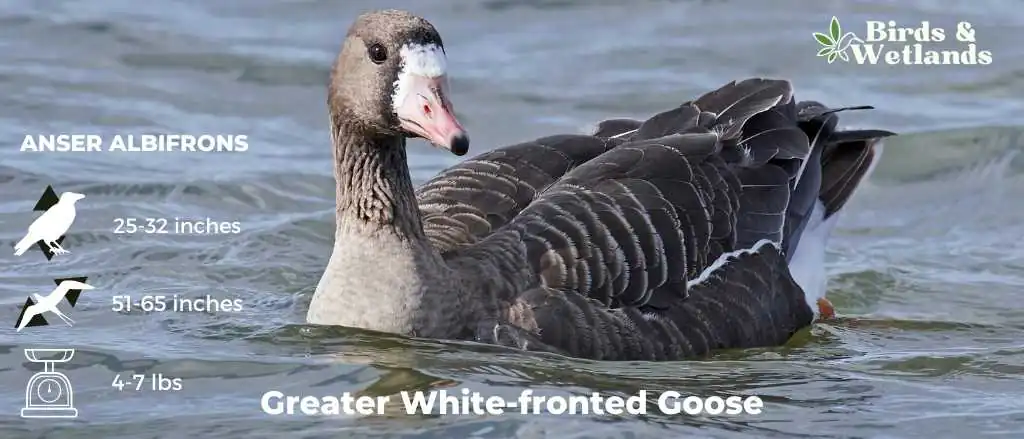
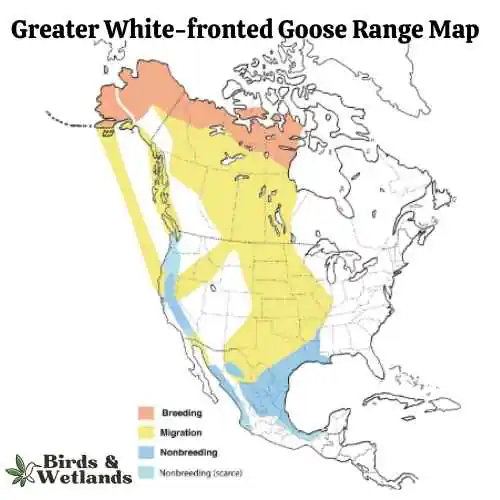
Listen
Scientific Name: Anser albifrons
Length: 25 to 31 in
Wingspan: 53 to 66 in
Weight: 3.3 to 6.6
The Greater White-fronted Goose is a medium to large waterfowl species, widely distributed across the Northern Hemisphere, particularly in North America.
Appearance: As the name suggests, these geese display a prominent white patch at the base of their bill. Their bodies are gray-brown, and their breasts are often marked with dark blotches. They possess a pinkish bill and orange legs and feet.
Diet: The Greater White-fronted Goose is a herbivore and feeds mainly on plant material. Its diet consists of grasses, sedges, grains, and berries. When wintering, these geese can often be found in agricultural fields, feasting on leftover grains and crops.
Reproduction: This species nests on the ground, often in areas with good visibility such as slopes or ridges. The female lays a clutch of 4 to 5 eggs, which she incubates for nearly a month. Once hatched, the young ones are taken care of by both parents until they are able to fly.
In Arizona, they are often found in Gilbert Water Ranch, Glendale Recharge Ponds, and ponds throughout Scottsdale.
Canada Goose
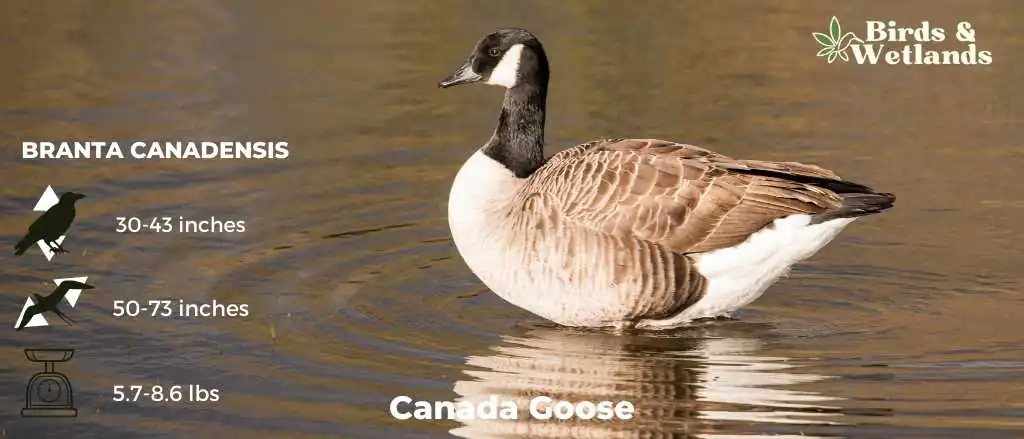
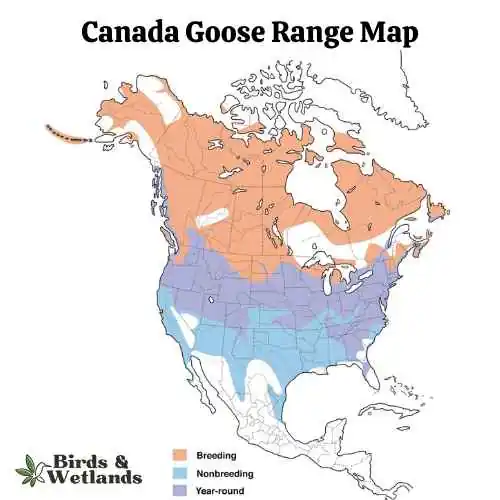
Canada Goose Sound
Scientific Name: Branta canadensis
Length: 30 to 43 in
Wingspan: 50–73 in
Weight: 5.7–14.3 lb
The Canada Goose is a large, well-known species of waterfowl noted for its distinctive appearance, familiar “honk,” and migratory behavior.
Appearance: Both male and female Canada Geese have a similar appearance, featuring a black head and neck with distinctive white patches on the cheeks and chin. The body is primarily brown with a lighter, often white, underbelly.
Diet: Canada Geese primarily feed on plant matter, including grasses, aquatic vegetation, and grains. They can often be seen grazing in parks, lawns, and fields, as well as dabbling in water bodies.
Reproduction: Canada Geese typically nest on the ground near water bodies, often on islands or other isolated areas to avoid predators. The female lays a clutch of about 4 to 6 eggs, which she incubates alone for around a month.
Canadian geese are extremely common throughout Arizona and recent counts but the year round residents at close to 6000, with much more found wintering in Arizona.
The birds begin to arrive during December, and can be found along the Colorado River or other areas with significant populations like White Mountain National Forest near Alpine St Johns . A large number live around Payson & Roosevelt Lake as well!
Where to Spot Arizona’s Geese
Geese often flock to Arizona in the winter for warmth. There are several North American Geese species in Arizona, including large flocks of Canada geese and Cackling geese.
Due to the increase in manmade lakes and water in parks, on golf courses, urban ponds etc, much more geese are becoming all-year-round residents and don’t just come for the winter months, particularly in the Phoenix area.
While Arizona is not typically known for a wide diversity of geese species, there are a few locations where you may have a chance to spot geese:
Ashurst Lake: Located near Flagstaff, Ashurst Lake is a popular spot for waterfowl, including geese. During migration seasons, Canada Geese can often be seen resting and foraging along the lake’s shores. Also great for spotting Arizona’s birds of prey.
Lake Havasu: Situated on the Colorado River, Lake Havasu attracts various waterfowl species, including geese. Keep an eye out for Canada Geese and occasionally other species that may visit the area.
Patagonia Lake State Park: This scenic park in southern Arizona is known for its diverse birdlife. While geese sightings may be less common compared to other waterfowl, Patagonia Lake can still offer opportunities to observe a range of bird species, including geese.
| Neighboring State | Best Spots to See Geese |
|---|---|
| California Geese | 1. Sacramento National Wildlife Refuge Complex 2. Salton Sea National Wildlife Refuge 3. Merced National Wildlife Refuge |
| Nevada Geese | 1. Fallon National Wildlife Refuge 2. Ruby Lake National Wildlife Refuge 3. Washoe Lake State Park |
| Utah Geese | 1. Bear River Migratory Bird Refuge 2. Antelope Island State Park 3. Great Salt Lake State Park |
Can You Hunt Geese in Arizona?
Yes, the Arizona game and Fish Department does allow hunting of geese in certain areas of the state. However, there are some restrictions that you need to be aware of before you head out on your goose-hunting adventure, you are only allowed to hunt on open land and not on a golf course or municipal parks.
For up to date regulations on the waterfowl seasons, check the Arizona guides, this includes the seasons bag limits (for white geese and dark geese) and fees which may apply. The current bag limit is Twenty (20) white geese (snow, including blue and Ross’ goose) per day and four (4) dark geese (Canada, cackling, Brant and white-fronted) per day.
For example, you can only hunt geese during the open Waterfowl season, which runs from October through January and you will need to obtain a Hunting licence and permit, along with a Arizona Migratory Bird Stamp.
Additionally, there is a limit on the number of birds that you can harvest, so be sure to check the regulations before you head out.
Geese are common waterfowl that can be found throughout Arizona. They typically mate for life and build their nests on the ground near water sources such as lakes or ponds. Whilst one they just over wintered in Arizona, recent man made water features have meant that more and more geese are becoming permanent residents.
Canadians Goose are legally able to be hunted in Arizona, however there are certain areas, times and restrictions that you need to be aware of before setting out on your adventure. Be sure to check the current regulations to ensure a successful and enjoyable hunt.

